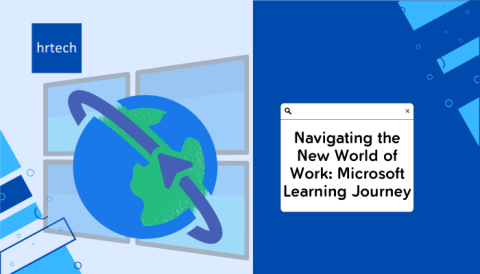A recent survey by Resume Builder highlighted the stark difference between quiet quitting and actual quitting. According to the survey, merely 25% of the workforce was truly engaged while the other 75% were exposed to the quiet quitting culture.
by Jayashree, Founder and CEO, Appreiz

Be it LinkedIn or any other social media platform, I am sure you must have come across this trending term at some point – ‘QUIET QUITTING.’ This was coined back in 2009 and has been in practice for a few years now but never became a concern. However, there seems to be a sudden rise of quiet quitting after the wave of great resignation.
A recent survey by Resume Builder highlighted the stark difference between quiet quitting and actual quitting. According to the survey, merely 25% of the workforce was truly engaged while the other 75% were exposed to the quiet quitting culture
Quiet quitting – Simply put, a quiet quitting culture is where employees simply attend work to complete the tasks assigned to them and never go above and beyond to deliver excellence. It is opposite to the hustle culture dynamics.
Here are some myths and realities about the quiet quitting culture.

As an organization, it is important to define work hour limits. With an inclining trend in blurry lines between personal and professional time owing to remote culture, employees find it overwhelming to set boundaries. Organizations need to prioritize employee wellbeing and save them from work overloads and burnouts.
Here are some compelling facts to prioritize employee wellbeing –
-
If you are not attending to what employees need, quiet quitting may affect up to $7.8 trillion each year
-
If not attended soon enough, there is a chance 85% of the workforce across the globe will be resigning in the next few years.
How do you know your employees are quiet quitting
a. Your employees seem to be disengaged over a long period of time
b. They show minimal involvement in meetings and refrain from sharing any talking points or action items
c. Often seem isolated from the team and do not want to be included in any initiatives and activities
d. They do the bare minimum not because they are not capable but because they are disengaged
Here are a few DOs and DON’Ts to avoid the culture of quiet quitting
DOs
1. Recognize your workforce – 79% of employees would stop quiet quitting3 if they are recognized at the right time. Create an environment where you encourage and appreciate employees periodically and also in real-time when they show promising results or even go above and beyond.
2. Create a periodical check-in mechanism – Check-ins are the most effective yet underutilized method to build or rebuild relationships with the employees. It’s important to schedule weekly, monthly or quarterly check-ins that will help employers understand where their employees need help, face challenges and can perform better.
It can be in a simple Q & A format and asynchronous too. This way, employees do not feel confined in a space to share what is not working for them. Creating a seamless check-in channel reduces miscommunication, increases employee engagement, builds a healthy employer-employee relationship and improves performance tremendously.
3. Know what makes them happy – How often do you check with your employees if they are happy? Psychologically, humans refrain from sharing how happy they are to their employers. This is mainly due to the fear of being judged. Yet, employee happiness is the most crucial factor for an organization.
Conduct timely surveys and add questions that touch their emotional side. Employee happiness index is directly proportional to employee satisfaction, engagement and productivity.
4. Listen to their needs and acknowledge them – Easiest thing to do is to ask questions, but that won’t always guarantee that employees will answer honestly. When you truly want to listen, you don’t ask questions, you give them an open forum to share their opinions, ideas and suggestions. You ask questions to know them and create a forum to listen to them. It often happens that employees shy away from suggesting for various reasons or assumptions like
a. My manager would not listen to me
b. I have never gotten a solution
c. Nothing ever changes
d. Scared to share what I think
So, creating a safe space where they can voice their concerns and suggestions anonymously would help employees to a greater extent.
DON’Ts
1. Do not expect them to do everything – One of the major reasons for employees to care less about their work is when they are overburdened or when they feel overwhelmed with a lot of work. Unless roles, responsibilities and goals are clearly defined, this will eventually lead to burnout; employees lose interest to engage and impact performance negatively.
2. Do not invade into their off work hours – Unless there is a dire need, it is important to set boundaries between employees and the employers. Post covid, employees are finding it challenging to set clear boundaries with personal and professional time. This pesters them largely that it goes up to quitting or impact their productivity.
3. Do not micromanage – A recent study4 found out that about.68% of reduction in morale and 55% reduction in productivity was caused due to micromanagement. This often leads to employees showing severe indifference towards their work and end up just doing what they are asked to and would not come up with new ideas or suggestions.
4. Do not impose your thoughts or ideas of work – Idea of work varies from person to person. Trying to impose that on other employees would not turn out well. As each one of them battles their own demons and workload and each employee has different ways of work, it is pertinent to understand that considering everyone the same will further reduce employee productivity and motivation.
Implementing all of the above:
Entirety at Appreiz is always about employee happiness, engagement and recognition. Our mission is to help organizations build a seamless system that becomes an integral part of their day-to-day operations. Starting from building a motivating environment via meaningful recognition powered by gamification, to engaging with them via periodical check-ins, polls, quiz, to understanding them via happiness surveys to boosting their morale and performance with meaningful goal setting. Appreiz is a go-to platform to build a happy workplace without any hassle.
Are you an organization going through a rough patch? Or affected by recession but fighting with all might to outgrow? Reach out to us on [email protected] and our team will get in touch with you to discuss how we can help you enhance your employee engagement and business productivity.
Reference Links
-
https://indianexpress.com/article/explained/explained-culture/quiet-quitting-explained-impact-on-companies-employees-8110366/
-
https://teambuilding.com/blog/quiet-quitting-statistics
-
https://www.octanner.com/content/dam/oc-tanner/documents/global-research/White_Paper_Performance_Accelerated.pdf
-
https://development-academy.co.uk/news-tips/micromanagement/
About the author :

Jayashree is the founder and CEO of Appreiz. Founded in 2016, Appreiz serves across employee engagement, employee well-being, Tech excellence. She has wider experience in engineering and operational excellence with Microsoft, General Electric, and start-ups. She was Principal PM, Director of strategy and planning, Director of Quality and Process in Microsoft India and COE leader in GE Consumer and Industrial Systems. During her career in Microsoft, she worked closely with HR in formulating the onboarding strategy of new hires, Leadership program for senior individual contributors and workforce plan aligned with the multi-year roadmap of the organization.




